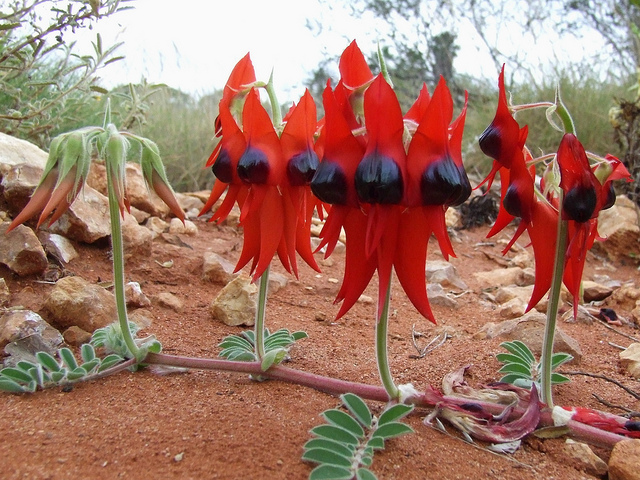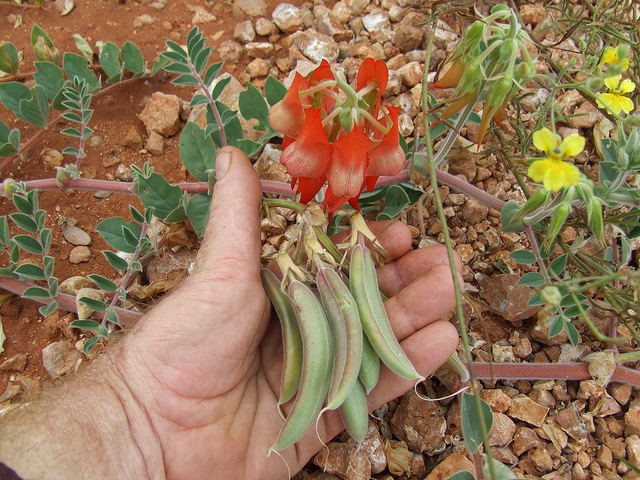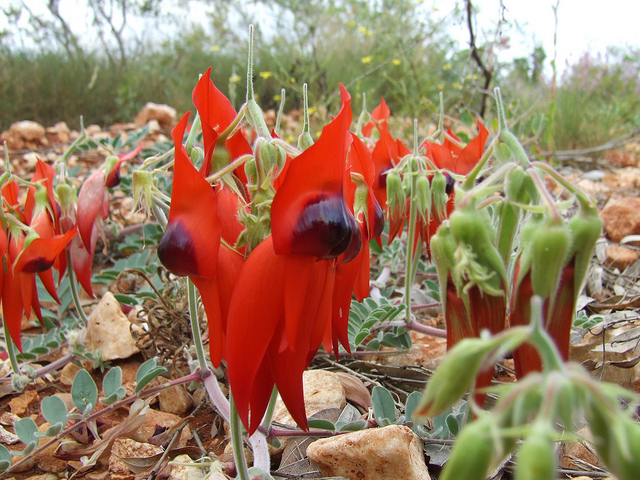Pods
The pods are hard and light brown when ripe and if shaken the seeds rattle inside them.
Field Guide
Improve your identification skills. Download your Sturt's Desert Pea field guide here!
Although named after the early explorer, Charles Sturt, this legume was first collected by William Dampier on an island in the Dampier Archipelago in 1699.
Low spreading ground cover up to 3 m wide and 30 cm high.
Dull green leaves are made up of 7 pairs of oval-shaped leaflets. Stems leaves and pods are covered in short soft hairs.
Red flowers are arranged in upright stalks in groups of 3 or more. Each flower is up to 9 cm from the top of the standard to the base of the keel. The standard is the large petal with the black dome at its base. In some plants the dome may be red and albino varieties with completely white flowers have been found in the Pilbara.
The pods are hard and light brown when ripe and if shaken the seeds rattle inside them.
Improve your identification skills. Download your Sturt's Desert Pea field guide here!

First fully open single flower
Full flowering (record all days)
End of flowering (when 95% of the flowers have faded)
How many plants


Sturt's Desert Pea is one of Australia's best known wildflowers and the floral emblem for South Australia.
A distinctive and iconic species, unlikely to be confused with any other when in flower.